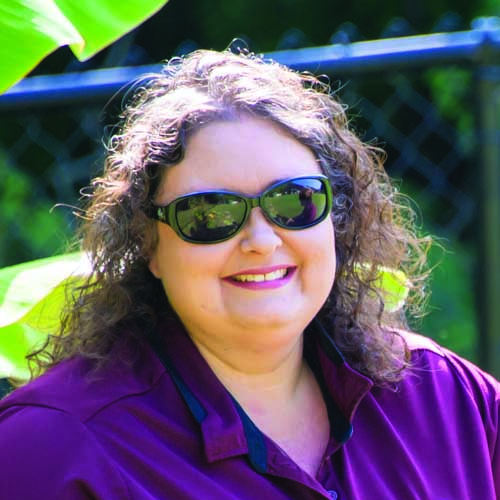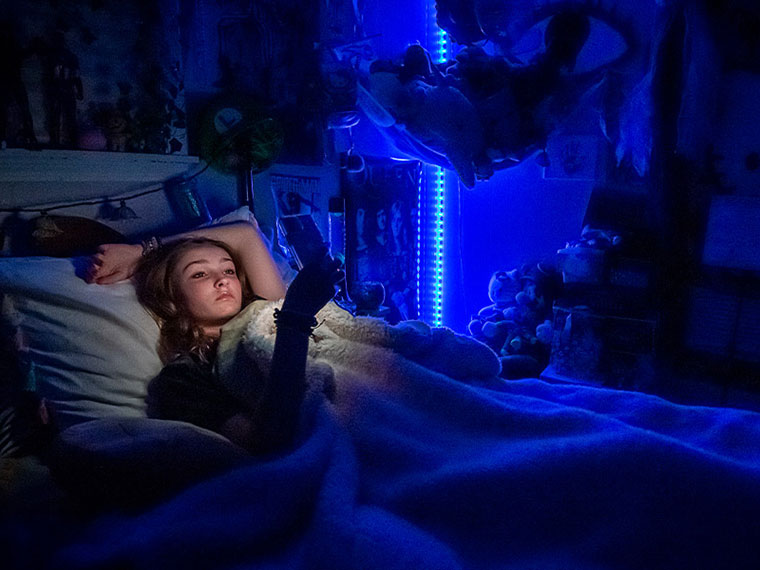The information presented on this page may be dated. It may refer to situations which have changed or people who are no longer affiliated with the university. It is archived as part of Mississippi State University's history.
If the days are long and years are short in childrearing, sleepless nights can feel endless for the parents of a child of any age who struggles with sleep. The pressure to make sure your child gets enough rest amid the world's many distractions is enough to keep you up at night. A MAFES researcher seeks to put child and adolescent sleep problems to rest by creating new ways to measure environmental factors that impact a good night's sleep.
Dr. Lori Elmore-Staton, MAFES researcher and associate professor in the School of Human Sciences, along with collaborators from Auburn University, Daemen College, the University of Rochester, and Case Western Reserve University, has established a scientific-based method for pediatricians and other clinicians to measure the sleep environments of children and adolescents. While a sleep hygiene assessment has been available for some time, the environmental assessment lets health care providers measure the environmental factors impacting sleep that are beyond a child's or adolescent's control.
Elmore-Staton discussed the importance of sleep as children and teens grow and develop.
"Sleep is central to all our physical, emotional, and social health but oftentimes many of us don't get the quantity or quality of sleep that we need," she said. "Sleep is especially important for children and adolescents because of how much they are growing. We know, for instance, that growth hormones are released at night, memory is consolidated, appetite hormones are regulated, and the brain is washed of toxins during sleep. These processes are important for development, academic achievement, and even for things like emotion regulation, and being able to interact well with other people."
While we spend a third of our lives sleeping, Elmore-Staton said studying sleep in a natural setting has been a recent development.
While sleep studies have been conducted for a century, with polysomnography, which records physiological changes in a patient to diagnose sleep disorders emerging in the 1970s, the study of the sleep of patients in their home environment is more recent.
"That work started happening about 30 years ago when we got new tools to be able to assess sleep, such as the actigraphy, a device that was a precursor to and more validated than a lot of the wearable tech we use today to measure sleep," Elmore-Staton said.
With the emergence of studying sleep in the homes of patients, the standard metric focused on sleep hygiene in youth became the Adolescent Sleep Hygiene Scale (ASHS), a self-report questionnaire designed to assess sleep hygiene in teenagers. Sleep hygiene includes the factors an individual can control such as the amount of caffeine they consume before bed or if they fall asleep while watching an iPad. Elmore-Staton helped fill the gap to measure other environmental factors impacting sleep that are not always in a patient's control.
"Routines, physical activity, and food and beverage intake that are known to influence sleep are already assessed with the ASHS, whereas our survey evaluates environmental factors such as outside noise or light, bedding quality, or if they share a room," she said.
Elmore-Staton explained that the sleep environment has a significant impact on a child's sleep, yet there hasn't been an effective way to quantify that set of factors.
"Emerging literature highlights children's and adolescents' sleep environments are fundamental to their sleep health. Despite their importance, however, there remains a noticeable absence of valid and reliable assessments of this construct. We sought to develop a reliable measure of children's and adolescents' sleep environments to support research and clinical work on youth's sleep health," she said.
The team drew from previous assessments of sleep and home environments including the MC-HOME visit and interview protocol and the Home Observation Uncovering the Sleep Environment (HOUSE) survey, two tools effective in identifying hazards and interventions specific to individual families. These tools, however, were either not designed to evaluate sleep environments on a broader scale or were too time intensive for the clinical setting. From there, the team established 55 items assessing a broad range of environmental factors and administered that online survey to 840 parents and caregivers of children ages 5 to 18 years old assessing their child's sleep environment. Drawing on that data, the researchers used exploratory analyses to select a comprehensive set of items with appropriate levels of convergent and discriminant validity.
Researchers analyzed the data and produced three subscales, or factors, on the Children's and Adolescents' Sleep Environment Scale, or CASES, which predicted daytime child sleepiness, the metric used to determine if these factors did indeed negatively impact a child's quality of sleep. The first factor-general environmental hazards-included not feeling safe, clutter, outside light or noise, sharing a room, or sleeping with a pet. The second factor-bedding materials-included lacking a pillow or blanket. The third factor-the presence of electronics in the room-included sleeping next to a smartphone, tablet, television, DVD player, or gaming console. Elmore-Staton said after controlling children's sleep hygiene, sleep disturbances, behavioral problems, and family functioning, the full-scale CASES significantly predicted children's sleepiness.
She said she is most excited about getting CASES into the hands of clinicians as a reliable indicator of the sleep environment and its potential impacts on youth's sleep behavior.
"I'm excited to see physicians and other care providers adopt this in a clinical setting. I have a passion for translating research to practice and so it's special to be a part of something that is a new readily-available tool that can help children and adolescents get on a trajectory toward a better night's sleep," she said.
As researchers and clinicians begin to use CASES, MAFES scientists are doing their part to help children and teens finally get the rest they need.
As researchers and clinicians begin to use CASES, MAFES scientists are doing their part to help children and teens finally get the rest they need.
Sleep Is Especially Important For Children And Adolescents Because Of How Much They Are Growing. We Know, For Instance, That Growth Hormones Are Released At Night, Memory Is Consolidated, Appetite Hormones Are Regulated, And The Brain Is Washed Of Toxins During Sleep.
Dr. Lori Elmore-Staton
Behind the Science

Lori Elmore-Staton
Associate Professor and Graduate Coordinator
Education: B.A., Psychology, M.S., and Ph.D., Human Development and Family Studies, Auburn University
Years At MSU: 10
Focus: Finding the risk and protective factors that contribute to the developmental trajectories of children cognitively, socially, emotionally, and physically with a special emphasis on sleep and emotional regulation of children
Passion At Work: I love translating science to practice in a way that improves the lives of families and children so that everyone has the opportunity for a successful, happy life.

